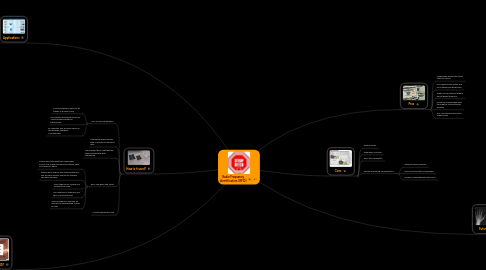Radio Frequency Identification (RFID)
by chris wheeler


1. Applications
1.1. Inventory Control
1.2. ID Badges and Access Control
1.3. Human Implant
1.4. Product Tracking
1.5. Transport Payment Detectors
1.6. Car Tracking in Rental Lots
1.7. Equipment/Personnel Tracking in Hospitals
1.8. Container/Pallet Tracking
1.9. Fleet Maintanence
2. How is it used?
2.1. Uses a scanning antenna
2.1.1. Scanning antenna puts out RF signals in a short range
2.1.2. RF radiation provides a means of communicating with the transponder
2.1.3. RF radiation also provides the RFID tag with the energy to communicate
2.2. Transceiver which comes with a decoder to interpret data
2.3. Transponder (RFID Tag) that has been programmed with information
2.4. RFID Tags have two types
2.4.1. Active RFID tags have their own power source; the reader can be much farther away and receive a signal
2.4.2. Passive RFID tags do not require batteries; can be much smaller and have a virtually unlimited life span
2.4.3. Many tags do not require line of sight to be read
2.4.4. The read time is typically less than 100 milliseconds
2.4.5. Large numbers of tags can be read at one time instead of item by item
2.5. Create membership site
3. What is RFID?
3.1. A system that transmits the identity of an object or person wirelessly
3.2. It allows automatic identification of objects, animals or people by incorporating a small electronic chip on its "host"
3.3. Data is stored on this chip and can then be read by wireless devices (RFID readers)
4. Pros
4.1. Technology has existed since the early 1920's
4.2. Can capture data faster and more easily than bardcodes
4.3. Great use for legally tracking items/goods/products
4.4. Useful for tracking key data through the transportation process
4.5. Will revolutionize the entire supply chain
5. Cons
5.1. Privacy Issues
5.2. Population Tracking
5.3. RFID Standardization
5.4. Human Implanting Complications
5.4.1. Adverse Tissue Reaction
5.4.2. Failure of Implanted Transponder
5.4.3. Possible Incompatibility with MRI's
